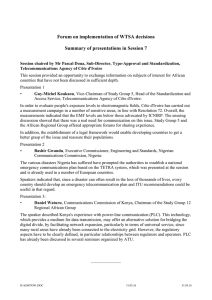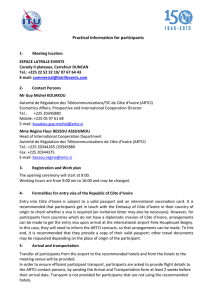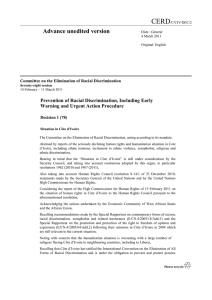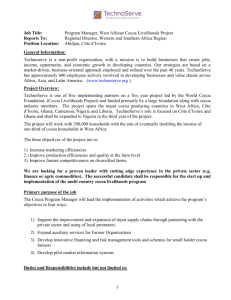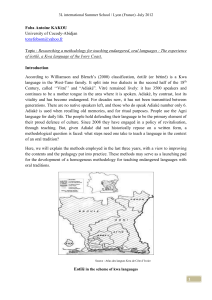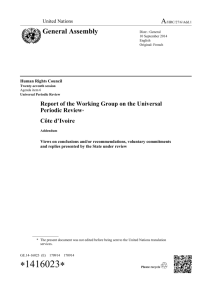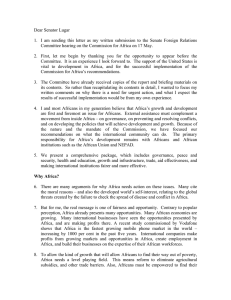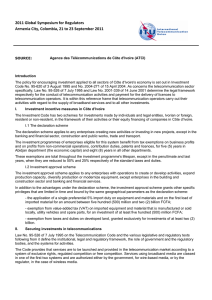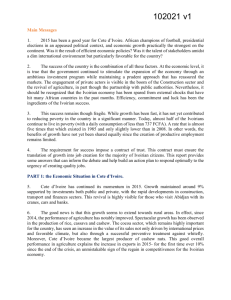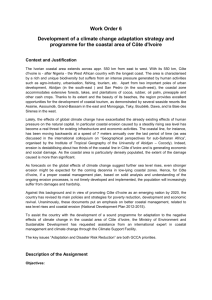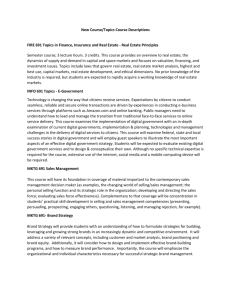COTE D` IVOIRE (IVORY COAST)
advertisement
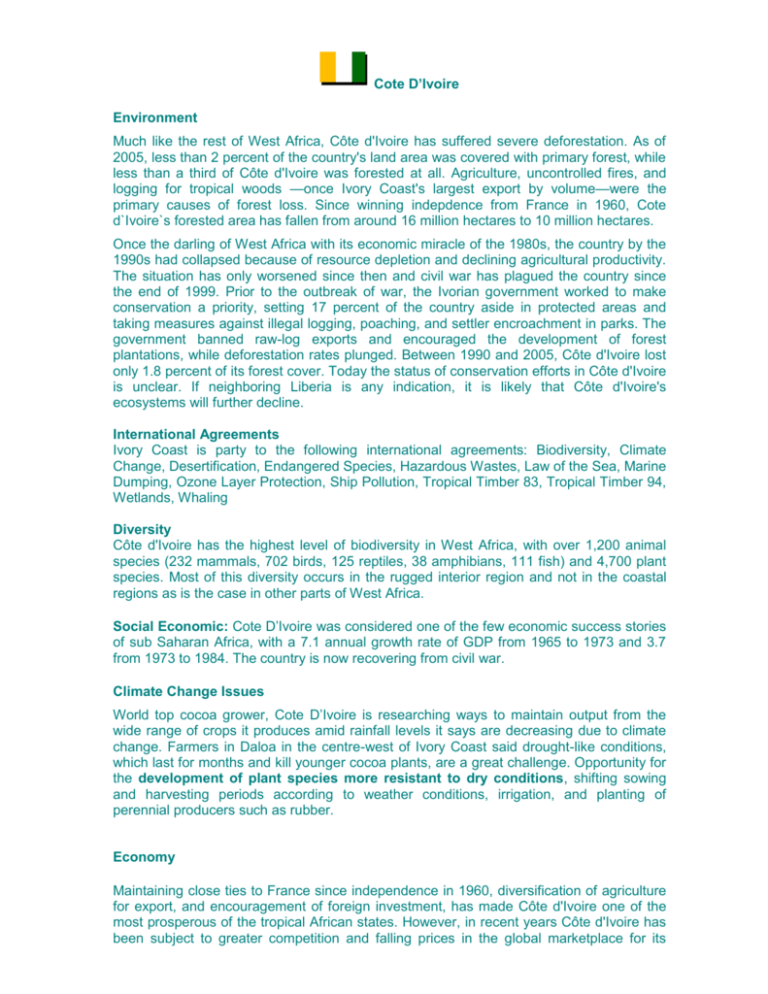
Cote D’Ivoire Environment Much like the rest of West Africa, Côte d'Ivoire has suffered severe deforestation. As of 2005, less than 2 percent of the country's land area was covered with primary forest, while less than a third of Côte d'Ivoire was forested at all. Agriculture, uncontrolled fires, and logging for tropical woods —once Ivory Coast's largest export by volume—were the primary causes of forest loss. Since winning indepdence from France in 1960, Cote d`Ivoire`s forested area has fallen from around 16 million hectares to 10 million hectares. Once the darling of West Africa with its economic miracle of the 1980s, the country by the 1990s had collapsed because of resource depletion and declining agricultural productivity. The situation has only worsened since then and civil war has plagued the country since the end of 1999. Prior to the outbreak of war, the Ivorian government worked to make conservation a priority, setting 17 percent of the country aside in protected areas and taking measures against illegal logging, poaching, and settler encroachment in parks. The government banned raw-log exports and encouraged the development of forest plantations, while deforestation rates plunged. Between 1990 and 2005, Côte d'Ivoire lost only 1.8 percent of its forest cover. Today the status of conservation efforts in Côte d'Ivoire is unclear. If neighboring Liberia is any indication, it is likely that Côte d'Ivoire's ecosystems will further decline. International Agreements Ivory Coast is party to the following international agreements: Biodiversity, Climate Change, Desertification, Endangered Species, Hazardous Wastes, Law of the Sea, Marine Dumping, Ozone Layer Protection, Ship Pollution, Tropical Timber 83, Tropical Timber 94, Wetlands, Whaling Diversity Côte d'Ivoire has the highest level of biodiversity in West Africa, with over 1,200 animal species (232 mammals, 702 birds, 125 reptiles, 38 amphibians, 111 fish) and 4,700 plant species. Most of this diversity occurs in the rugged interior region and not in the coastal regions as is the case in other parts of West Africa. Social Economic: Cote D’Ivoire was considered one of the few economic success stories of sub Saharan Africa, with a 7.1 annual growth rate of GDP from 1965 to 1973 and 3.7 from 1973 to 1984. The country is now recovering from civil war. Climate Change Issues World top cocoa grower, Cote D’Ivoire is researching ways to maintain output from the wide range of crops it produces amid rainfall levels it says are decreasing due to climate change. Farmers in Daloa in the centre-west of Ivory Coast said drought-like conditions, which last for months and kill younger cocoa plants, are a great challenge. Opportunity for the development of plant species more resistant to dry conditions, shifting sowing and harvesting periods according to weather conditions, irrigation, and planting of perennial producers such as rubber. Economy Maintaining close ties to France since independence in 1960, diversification of agriculture for export, and encouragement of foreign investment, has made Côte d'Ivoire one of the most prosperous of the tropical African states. However, in recent years Côte d'Ivoire has been subject to greater competition and falling prices in the global marketplace for its primary agricultural crops: coffee and cocoa. That, compounded with high internal corruption, makes life difficult for the grower and those exporting into foreign markets.
